AI in Logistics: Key Ways by Which AI Boosts the Logistics Industry
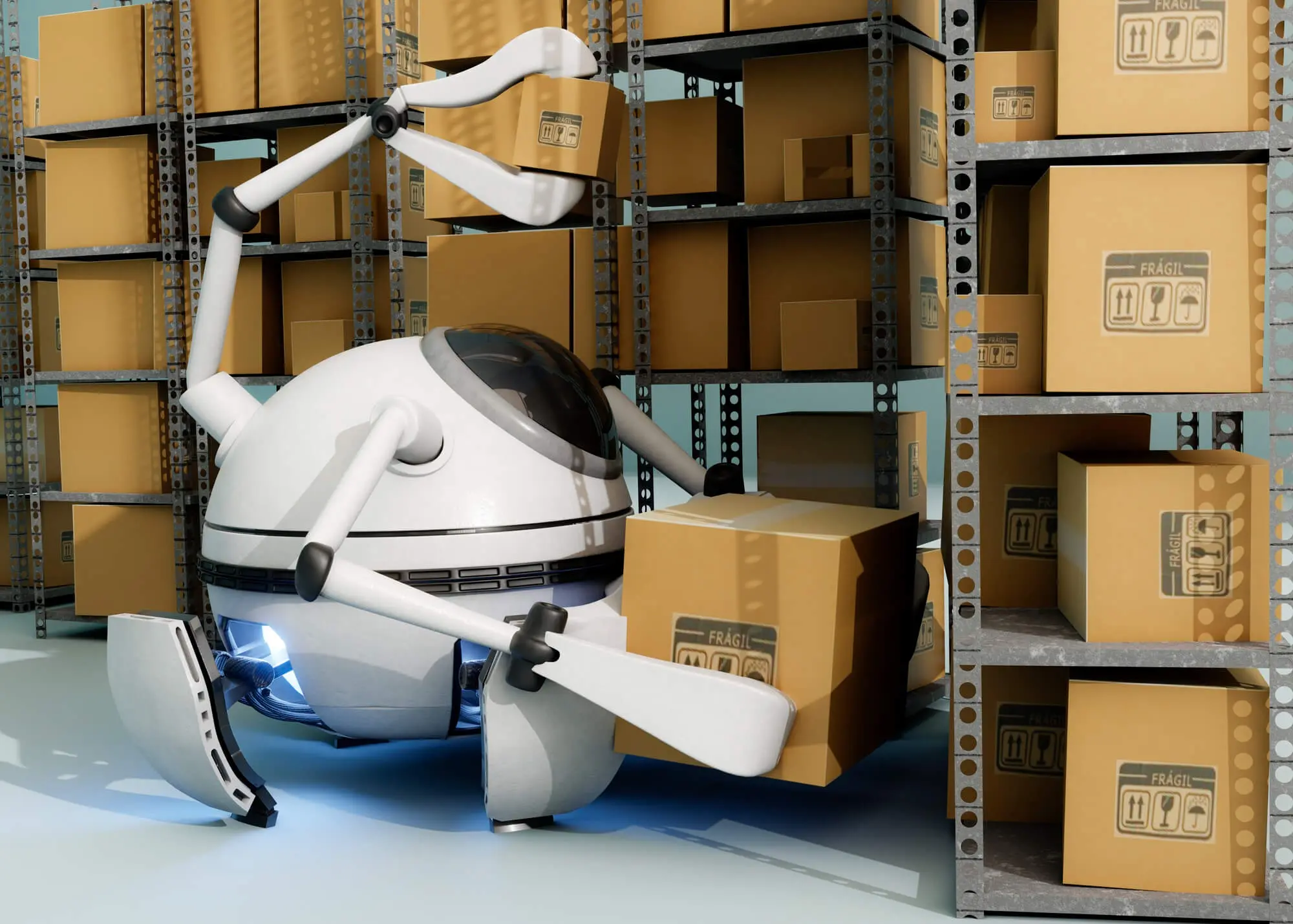
Imagine an industry where AI-driven innovations transform traditional processes, yielding exceptional productivity, cost savings, and competitive advantages. Welcome to the world of logistics, where Artificial Intelligence is revolutionizing every aspect of the supply chain.
According to Forbes Insight research, 65% of industry leaders recognize that we have entered an era of profound transformation in logistics, transportation, and supply chain management. By 2035, AI is projected to increase productivity by over 40%, and its adoption is rising among organizations of all sizes, says Accenture report. Moreover, a 2022 study by Garner anticipates that by 2024, 50% of supply chain organizations will invest in AI applications with sophisticated analytical capabilities.
As specialists in logistics software development, we’re well-positioned to shed light on the impact of AI in logistics. This article delves into how AI revolutionizes logistics operations and how businesses can leverage this technology to gain a competitive edge.
Overview of AI in the Logistics Industry
Though “artificial intelligence” has been around as a term and research field since the 1950s, the current surge in AI is primarily due to the affordable, powerful hardware now accessible. Only recently have advanced processors, high-speed networks, and expansive data storage options become available, enabling the practical application of numerous theoretical concepts.
Logistics is one of the sectors that have already embraced digitization. The recent rise of drones, autonomous systems, and artificial intelligence has further revolutionized the industry by enabling efficient business processes. AI and its algorithms are especially well-suited for logistics, as they can calculate and predict cause-effect relationships within these networks. As a result, logistics companies can expect to reap significant benefits from incorporating AI into their operations. Let’s examine this more closely.
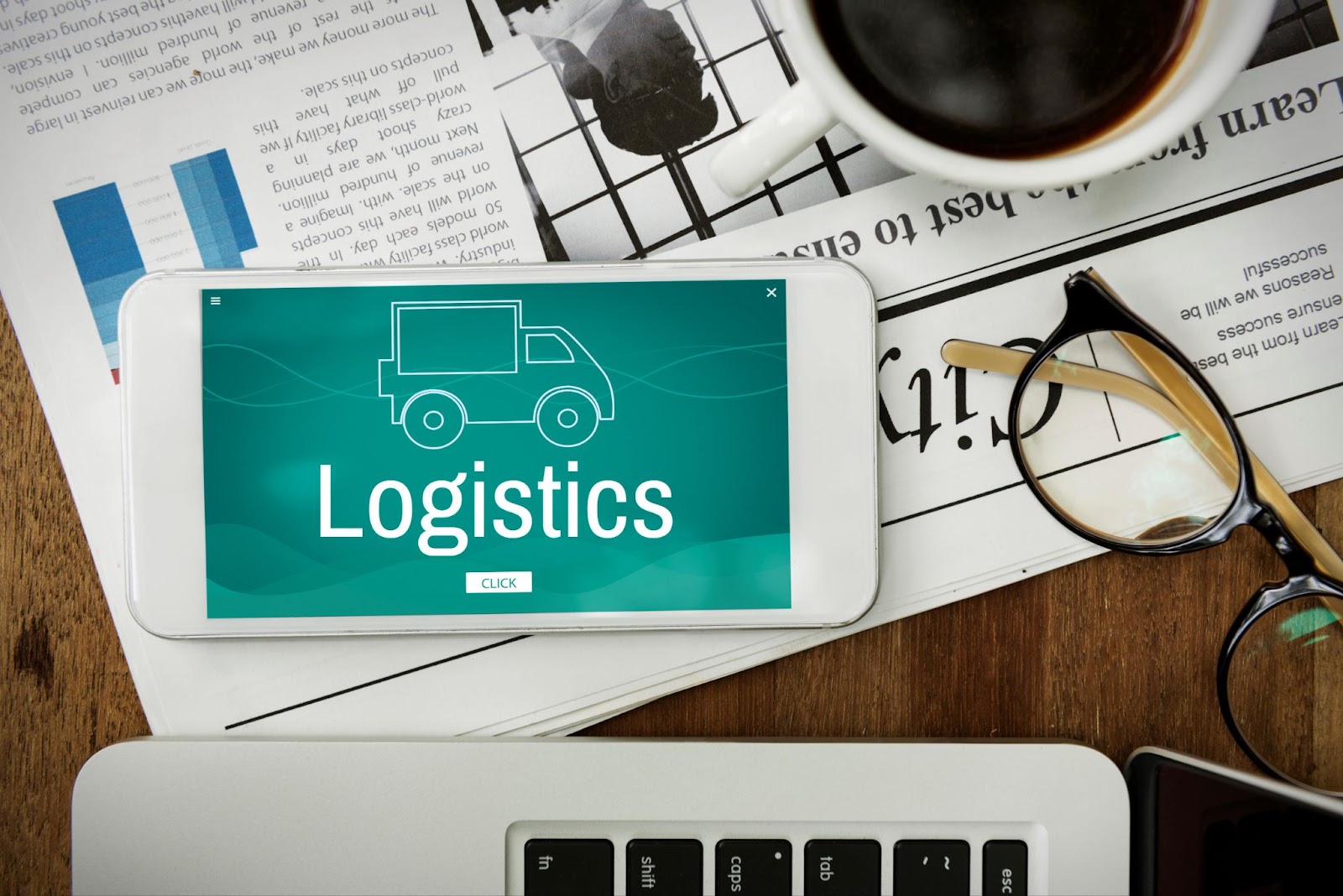
Reasons to Incorporate AI in Logistics
The keen interest in cutting-edge supply chain technology has been evident recently, with the AI-driven solutions market projected to reach $16.7 billion by 2027.
AI-powered tools can pinpoint specific aspects of the supply chain that need enhancement, leading to higher profits, more effective carrier contract management, and even harmonization of shipping and procurement rates. They can contribute to a 20 percent reduction in conversion expenses (excluding raw material costs), with increased labor productivity responsible for nearly 70 percent of the cost savings. According to McKinsey, early adopters who successfully integrated AI into their supply chain operations reported a 15 percent decrease in logistics expenses.
Increased Efficiency and Accuracy in Operations
AI-powered tools and systems streamline various processes in the logistics industry, from warehouse management to transportation. They automate repetitive tasks, minimize human errors, and provide accurate data analysis, resulting in more efficient and precise operations.
Enhanced Supply Chain Visibility
AI-driven platforms enable real-time tracking of shipments and supply chain events. By providing a comprehensive view of the entire supply chain, AI allows companies to quickly identify bottlenecks, improve decision-making, and enhance overall supply chain performance.
Smart Inventory Management
AI algorithms can accurately analyze historical and current data to forecast demand, facilitating optimal inventory management. That helps companies avoid stockouts and overstocking, ultimately reducing holding costs and improving customer satisfaction.
Improved Transportation Prediction
AI-powered systems can analyze weather, traffic conditions, and historical data to predict transportation times and potential disruptions. It enables logistics companies to make better-informed decisions, improving shipment planning and ensuring timely deliveries.
Delivery Route Optimization
To determine the most efficient delivery routes, route optimization tools powered by AI consider various factors, such as road conditions, fuel prices, and delivery schedules. By optimizing routes, logistics companies can reduce travel time, fuel consumption, and transportation costs, which benefits their bottom line and contributes to a more sustainable environment.
Reduced Operations Costs and Improved Safety
By automating manual tasks and enhancing decision-making, AI helps logistics companies reduce labor and operational expenses. Moreover, AI-driven predictive maintenance systems can identify potential equipment issues, ensuring timely repairs and reducing the risk of accidents, thus improving overall safety.
Integrating AI into logistics offers several advantages, including enhanced productivity, reduced expenses, heightened safety, and customer contentment. As AI technology advances, its applications in the logistics industry are set to expand, driving further innovation and growth.
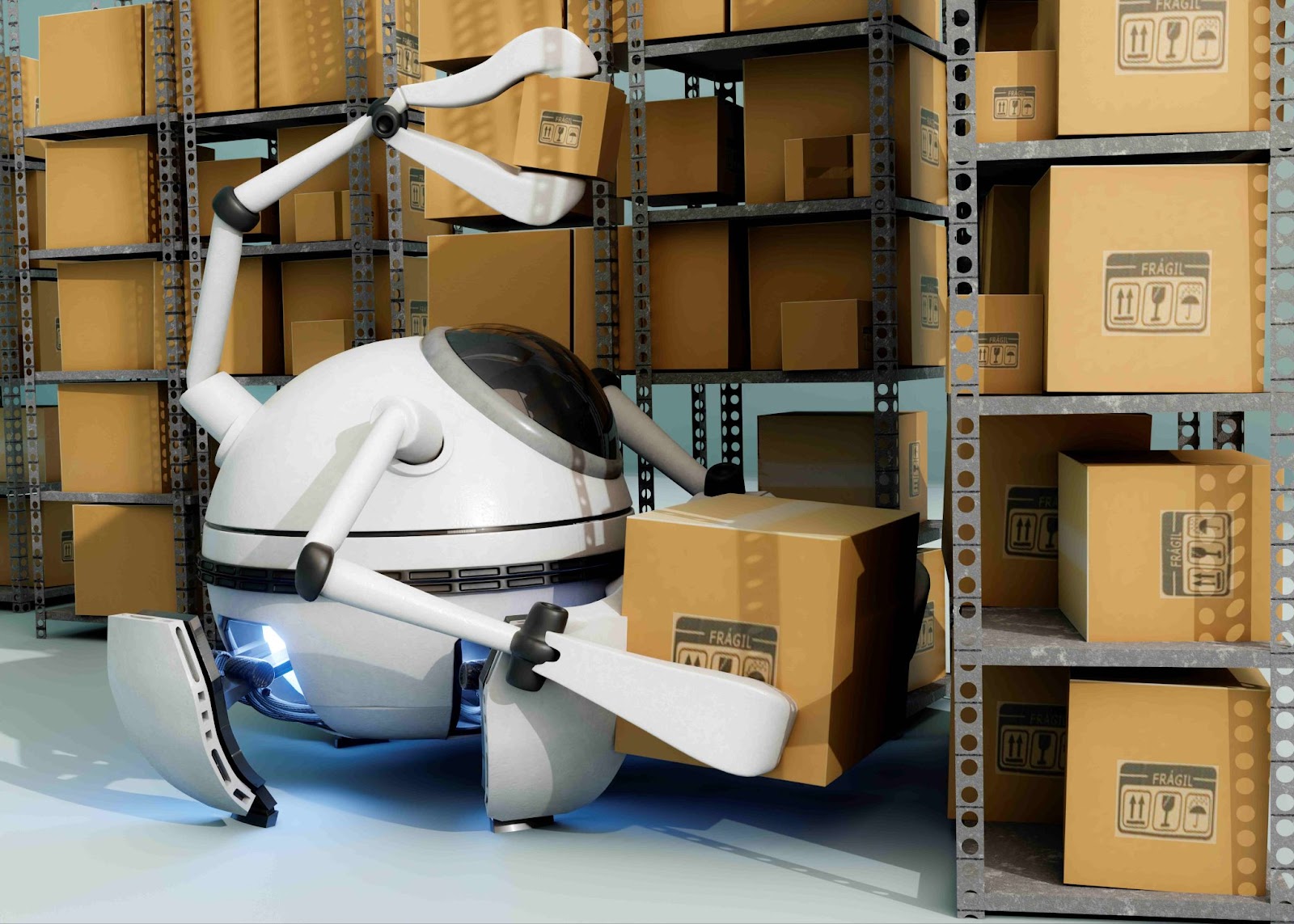
Artificial Intelligence Use Cases in Logistics
PwC suggests that AI applications hold the potential to revolutionize business processes and contribute a staggering $15.7 trillion to the global economy by 2030. AI can introduce enhanced agility and accuracy in supply chain optimization, paving the way for a significant boost in operational and supply chain efficiencies while reducing costs by automating repetitive manual tasks.
The integration of AI in logistics can be observed across various aspects of the supply chain, with several key applications gaining prominence.
Autonomous vehicles
An exemplary illustration of AI for the supply chain is evident in the trucking industry. In the US, trucking dominates freight movement and supply chain management, with 65% of consumable goods delivered by trucks, according to McKinsey.
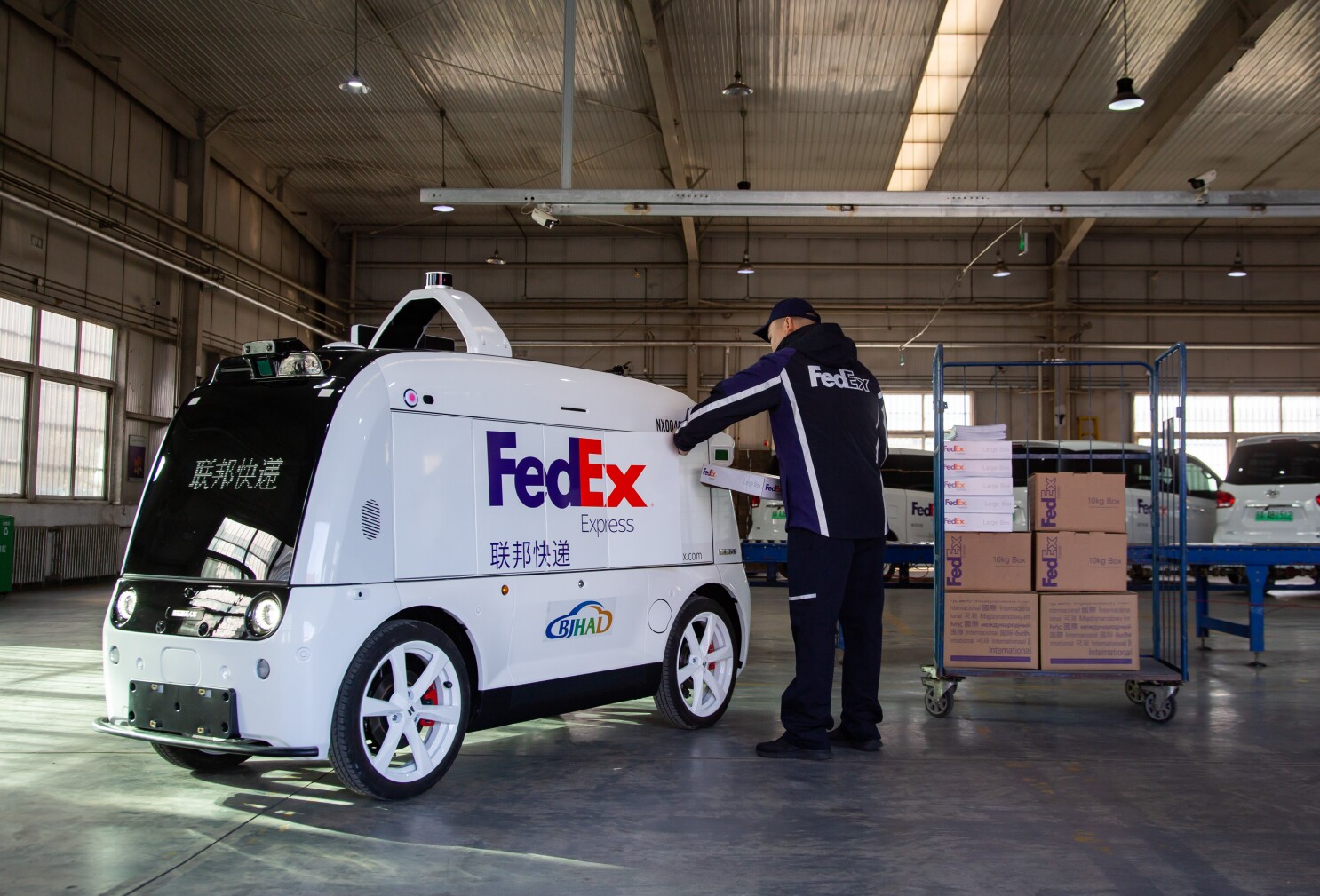
However, this comes at a high cost, as rising freight rates are expected to increase global import levels by up to 11% and consumer prices by around 1.5% in the next year. The freight industry also faces challenges like a shortage of over 80,000 truck drivers.
AI steps in to address these issues. With fully autonomous vehicles, operating costs could decrease by about 45%, saving the US for-hire trucking industry between $85–125 billion annually. Furthermore, autonomous cars can enhance road safety, as human errors account for 94% of severe vehicle accidents.
Real-life examples – UPS and FedEx
A real-life example of AI use in logistics involving autonomous vehicles is the collaboration between UPS and the autonomous vehicle startup, TuSimple. The partnership aims to explore the potential of autonomous trucking to reduce delivery times, cut fuel consumption, and improve overall operational efficiency. TuSimple’s self-driving trucks are equipped with AI-powered systems that utilize cameras, lidar, and radar sensors to perceive their surroundings and make informed, real-time decisions.
FedEx utilizes AI for its real-time package tracking and delivery route optimization. The company also invests in developing autonomous delivery vehicles, drones, and robots to improve last-mile delivery efficiency and reduce costs.
Predictive analytics
Performing data analytics, capacity estimation, and network analyses manually can be a time-consuming and challenging task for logistics planners, especially during peak periods or as businesses expand. In the past, logistics planners relied on manual methods such as pen and paper to assess operational states. However, in today’s fast-paced environment, despite their expertise and intuition, they require assistance to ensure optimization.
AI and predictive analytics provide a solution to these challenges. By processing more accurate data, AI can efficiently execute logistics tasks while incorporating additional relevant factors for improved demand forecasting, enabling logistics technology firms to adopt a proactive approach. This foresight allows artificial intelligence logistics companies to stay ahead of the demand curve, gain a competitive advantage in the transportation sector, and reduce unnecessary expenses.
Real-life examples – DHL and Maersk
DHL, a global transportation leader, exemplifies the benefits of AI integration. Their system examines more than eight million social media and online posts to recognize likely disruptions in the supply chain. Their platform gathers insights from online discussions using natural language processing (NLP) and machine learning (ML). It identifies potential shortages, access problems, and supplier statuses that may affect the supply chain.
Maersk, a famous shipping and logistics company, has embraced the potential of AI in its operations. They’ve created an AI-powered virtual assistant, Captain Peter, who can provide quick and helpful responses to customer queries while suggesting the most efficient shipping routes.
Maersk has also implemented machine learning algorithms to improve demand forecasting and optimize its shipping network, allowing for smoother operations and better customer satisfaction. They’ve even developed a cutting-edge blockchain-based platform, TradeLens, that utilizes AI to track and manage the shipping of goods across global supply chains, resulting in more transparency and efficiency.
Smart roads
AI is poised to assist the logistics sector by developing smart roads. These roads integrate sensors, solar panels, AI, and big data to enhance visibility, communicate with autonomous vehicles, and monitor road conditions. It substantially benefits the industry by ensuring the safe transportation of goods.
For example, embedding LED lights and solar panels in highways generate energy and heat, preventing icy surfaces during winter. The system can notify drivers of changing conditions and suggest faster alternate routes. Furthermore, it utilizes fiber optic sensors to monitor traffic and detect blockages due to accidents. Consequently, customers can anticipate timely package deliveries. In essence, smart roads focus on the final stage of the logistics cycle, guaranteeing prompt, intact deliveries to consumers.
Real-life examples – Smart Mobility Corridor
One such example is the Smart Mobility Corridor project in Ohio, USA. Spanning a 35-mile stretch of highway, this project uses AI and advanced sensors to monitor traffic conditions, detect accidents, and identify congestion points. The system enables logistics companies to optimize transportation strategies by providing real-time information, reducing travel time and fuel consumption.
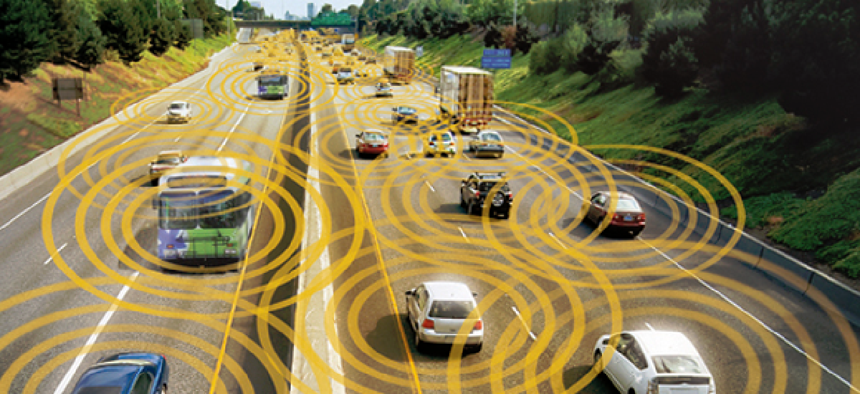
Another example is Singapore’s Electronic Road Pricing (ERP) system, which uses AI and IoT devices to regulate traffic flow. The ERP system adjusts road tolls dynamically based on real-time traffic data, encouraging drivers to choose alternative routes or off-peak travel times. It helps alleviate congestion and improve overall road conditions for logistics companies and commuters.
Back office operations
In the logistics industry, companies frequently face various back-office tasks that require attention, such as processing documents, managing schedules, tracking shipments, generating reports, and managing emails. Companies can use automation technologies like artificial intelligence, robotic process automation (RPA), and process mining to simplify these activities.
For instance, document automation can automate data input, error reconciliation, and processing of logistics-related documents like invoices, bills of lading, and rate sheets. Meanwhile, AI systems can schedule transportation, track packages in the warehouse, and assign employees to specific stations. RPA tools can also auto-generate reports and send emails to relevant stakeholders based on report content. Hyperautomation, as this combination of technologies is called, can help logistics companies optimize their back-office operations and increase efficiency.
Real-life examples – UPS
AI has significantly impacted back-office operations in various industries, allowing companies to optimize their processes, increase productivity, and reduce costs. For example, UPS has incorporated an AI-based chatbot called UPS Bot to automate back-office tasks such as shipment tracking, customer inquiries, and rate quotes.
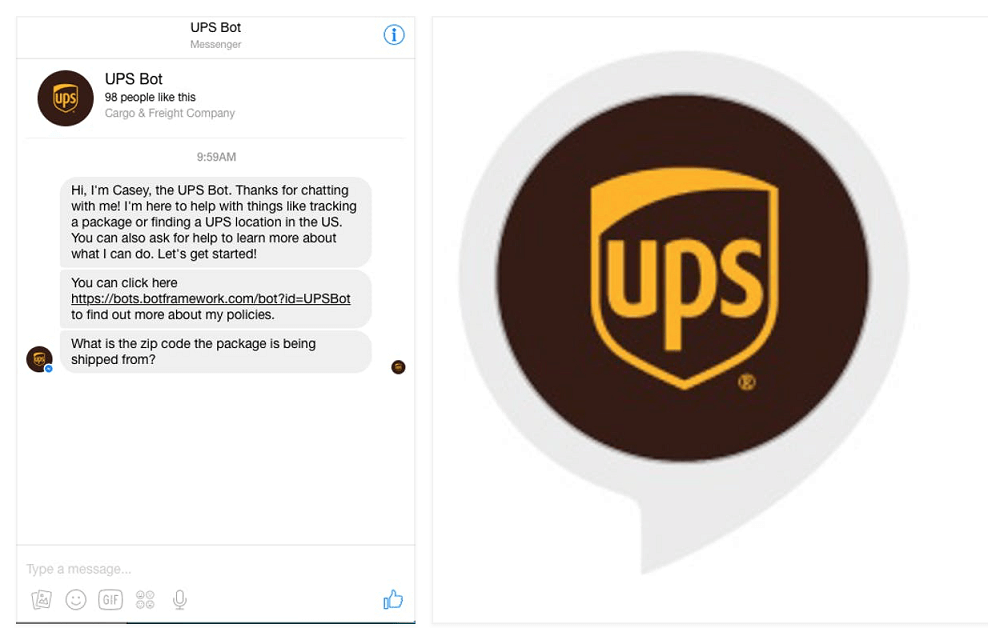
This chatbot can understand and respond to customer queries in natural language, making interactions more conversational. With this technology, response times have decreased while customer service agents can focus on more complex tasks, improving efficiency and customer satisfaction.
Warehouse automation (robotic)
Using robotics in the supply chain is no longer a futuristic concept, as automated systems are increasingly being implemented in warehouses worldwide. Robotics technology is utilized to locate, track, and transport inventory inside warehouses and to sort and convey oversized packages in ground distribution hubs. Over 60% of companies use this technology by this time.
Also, automated warehouses often rely on computer vision technology to identify and organize goods. This technology is improving quality control processes in the future by reducing the need for human intervention. Additionally, AI can connect multiple warehouses in a supply chain and determine the best option for transferring inventory.
Real-life examples – Fizyr and Amazon
An example of supply chain robotics can be seen through the work of the Dutch deep tech startup, Fizyr. It uses deep learning algorithms to enhance robotics, providing autonomous decision-making capabilities for identifying, analyzing, counting, picking, and manipulating goods. The process of picking is often one of the most labor-intensive aspects of the logistics process. To address this, Fizyr has developed a solution that enables the robot to quickly identify the package type and move the item to the desired location in less than 0.2 seconds.
Amazon leverages AI for its advanced warehouse automation, incorporating robots to assist in sorting, packing, and moving items. AI-driven demand forecasting algorithms enable better inventory and asset management and efficient distribution of products across its vast network of fulfillment centers.

Dynamic pricing models
As supply chains become more complex, logistics companies face the challenge of finding ways to optimize their operations. One solution is to implement a dynamic pricing strategy, which reduces manual price adjustments and allows for strategic pricing based on factors such as competitor prices, supply and demand, and customer behavior.
By using AI-based dynamic pricing software, companies can monitor these factors and adjust prices accordingly, leading to increased profitability and agility in response to market changes. Moreover, AI can help businesses identify opportunities for price discrimination and fine-tune their pricing strategies for maximum effectiveness.
Real-life examples – Uber and Convoy
Some examples of companies that use dynamic pricing models in logistics include Uber Freight, which uses AI-powered algorithms to adjust its pricing based on market demand and truck driver availability.
Another example is Convoy, which uses real-time data and machine learning to optimize customer pricing and routing. These companies, along with others, are utilizing the capabilities of artificial intelligence and dynamic pricing strategies to maintain a competitive edge in the rapidly evolving logistics industry.
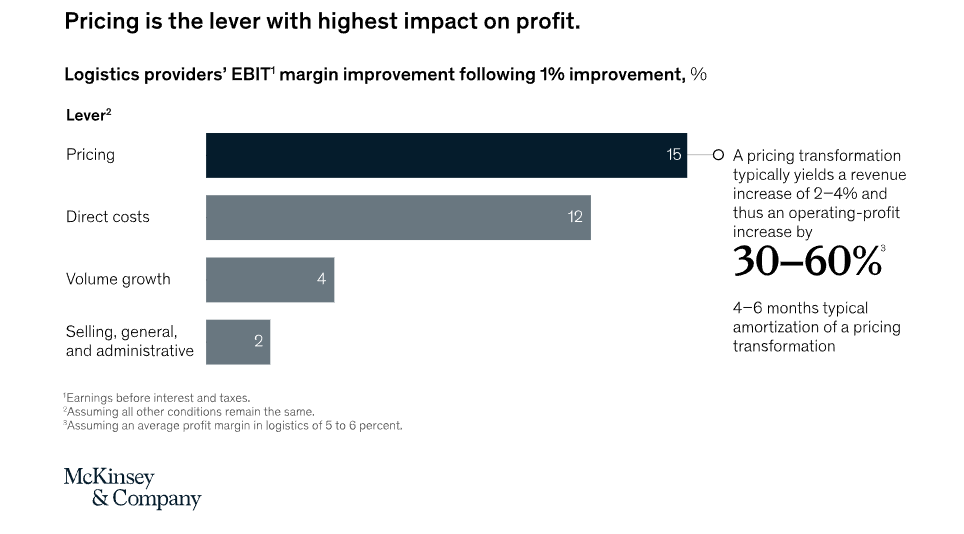
AI in Logistics and Supply Chain: A Future Full of Promises
AI’s numerous innovations in logistics have enhanced supply chain transparency and boosted consumer trust in placing and receiving orders. By breaking down barriers and incorporating advanced data analytics, AI has revealed insights previously unattainable. That enables managers to be proactive and reduce unexpected disruptions. Consequently, AI allows companies to develop viable financial budgets spanning up to a decade ahead.
As a key driver of Industry 4.0 technology, the future possibilities AI can unlock are virtually limitless. While many continue to explore and assess AI’s full potential, the logistics industry can anticipate a promising future characterized by security, cost-effectiveness, and sustainability.
Conclusion
AI rapidly transforms various industries, including logistics, through ongoing innovations that will keep evolving. Embracing this digital transformation is crucial for businesses to ensure their viability and competitiveness in the industry. Companies implementing AI technologies early can double their cash flow, while laggards would see their cash flow decline by about 20 percent from today’s levels.
The opportunity to harness the potential of artificial intelligence for your logistics operations is within your reach. All you need to do is reach out to Relevant – a leading logistics AI software development company. By partnering with us, you can leverage cutting-edge AI technologies to optimize your logistics processes, improve efficiency, and gain a competitive edge in the ever-evolving marketplace. Do not delay; take the first step toward transforming your logistics operations with the power of AI today.



